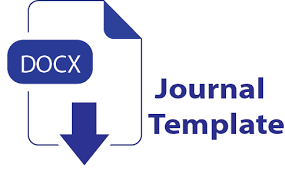FAKTOR- FAKTOR YANG BERHUBUNGAN DENGAN PENGGUNAAN POCKET DOSEMETER PADA PETUGAS RADIOLOGI DI INSTALASI RADIOLOGI 9 RUMAH SAKIT BANDAR LAMPUNG
DOI:
https://doi.org/10.38215/jutek.v2i2.42Keywords:
Alat Pelindung Diri, Pocket dosemeter, TLDAbstract
Radiation protection equipment Thermoluminisence Dosemeter (TLD) Badge can reduce and protect Radiology Officers. The purpose of this study was to determine the factors associated with the use of pocket dosemeter in the danger of radiation to the health and safety of officers with different levels of ease. Quantitative Research Design with Crossectional, the number of respondents 59 people. Primary data consisted of questionnaires, research questionnaires consisting of the characteristics of respondents, level of knowledge, attitude, approval of tools, comfort, training, supervision. Data analysis uses Univariate analysis which is visualized in tabular form. This analysis is done by calculating the distribution and percentage of each variable, while the bivariate analysis uses the chi square test and multivariate analysis using logistic regression. The results showed the knowledge variable p value = 0, 018. Attitude p value = 0, 038. The value of the tool p value = 0, 004.
Downloads
References
IAEA, (1999), Safety Series International Basic Safety standards for protection against Ionizing Radiation and For the safety of radition sources, international Atomic Energy Agency, Vienna.
Purwaningtyas, (2000), Evaluasi Penerimaan Dosis Paparan Radiasi Pekerja, dibidang Akselator, Pusat penelitian dan Pengembangan Teknologi Maju, Badan Tenaga Nuklir Nasional, Yogyakarta.
Suatmadji, A, (1993), Efek Radiasi terhadap Materi Biologi, Pelatihan Proteksi Radiasi, Pusat pendidikan dan Pelatihan, Badan Tenaga Nuklir, Yogyakarta.
Notoatmodjo, Soekidjo, (2010), Metodologi Penelitian kesehatan, Jakarta : PT. Rineka Cipta
Arikunto, Suharsimi, (1996), Prosedur Penelitian Suatu Pendekatan Praktek, Jakarta : PT.Rineka Cipta
Azwar, Dr.Saifuddin, (2015), Sikap Manusia Teori dan Pengukurannya, Yogyakarta : Pustaka Pelajar
Notoatmodjo, Soekidjo, (2014), Ilmu Perilaku Kesehatan, Jakarta : PT. Rineka Cipta
Iman Khasani, Soemanto, (1990), Keselamatan Kerja dalam Laboratorium Kimia, Jakarta : PT. Gramedia
Hastono, Sutanto Priyo, (2006), Statistik Kesehatan, Jakarta : PT. Raja Grafindo Persada.
ICRP, (1990), Proteksi Radiasi Pekerja Radiasi, Badan Tenaga Nuklir Nasional.
Laporan keselamatan Nuklir, (2009) Nuclear energy regulatory agency, Badan Pengawas Tenaga Nuklir.
Laporan keselamatan Nuklir, (2014) Nuclear energy regulatory agency, Badan Pengawas Tenaga Nuklir.
Himpunan Peraturan Perundang-undangan Ketenaganukliran, BAPETEN : Jakarta.
Ballinger, Philip W, (1995) Radiograpich Position and Radiologic Procedures, Seven Edition, Mosby:London.
Akhadi Muklisin, (2000), Proteksi Radiasi : Ketentuan Keselamatan Kerja Terhadap Diri Sendiri, jakarta, BATAN
Peraturan Pemerintah RI No.63, (2000), Keselamatan dan Kesehatan terhadap Pemanfaatan Radiasi Pengion.
Atomic Energy Control Bourd, Bureau of medical devices, Department Healt and Welfare, “ Training manual “ Canada (1993)
Departement Healt and welfare , “ X-ray equipment in medical diagnosis part A : Recommended Safety Procedures For Instaltion and use ‘, Safety Last modifield (2002), Canada
International A. Tomic Energy Agency, International Basic Safety Standards For Protection Against Ionizing Radiation and For The Safety Of Radiation Sources “ IAEA Safety, Vienna, (1996).
Abidin Zaenal dkk, 2008 Hubungan Perilaku Keselamatan dan Kesehatan Kerja, Jurnal Sekolah Tinggi Teknologi Nuklir, Batan
Green, L. W, Kreuter (2000), Healt Promotion Planning, An Educational and Envirotmental Approach, 2nd Edition, May Field Publishing Company, California.
Setiawati, L. (1996), “ Keselamatan Kerja dan Pencegahan Kecelakaan Kerja “, Pelatihan Keahlian Hiperkes dan Keselamatan Kerja Bagi Guru-guru SMK DIY.
BAPETEN, (2003), Himpunan Peraturan Peraturan Perundang-undangan Ketenaganukliran, Penerbit Badan Pengawas Tenaga Nuklir, Jakarta
Hadi Sutrisno dan Parmadiningsih Y, (2000), Seri Program Statistik Versi 2000, Universitas Gadjah Mada, Yogyakarta.
IRCP, (1991), “ International Commisision on Radiological Protection. Recommendations Report No. 60”, Pergarnon, New York.
Kunto Wiharto, (1992), “ Pengantar Keselamatan Kerja, Diklat Keselamatan dan Kesehatan Kerja”, Pusat Pendidikan dan Pelatihan Badan Tenaga Nuklir Nasional, Jakarta.
Widyati S, Lubis W, Tedjasari RS, Yatim S, (1997), “ Evaluasi Keselamatan Pekerja di PPTA Serpong”. Jurnal Keselamatan Radiasi dan Lingkungan, ISSN : 0854-4085, Jakarta
Wiryosimin S, (1995), Mengenal Azas Proteksi Radiasi, Penerbit FMIPA Institut Teknologi Bandung
Downloads
Published
Issue
Section
License
Copyright (c) 2020 Jurnal Teras Kesehatan

This work is licensed under a Creative Commons Attribution-ShareAlike 4.0 International License.
Authors who publish articles in Jurnal Teras Kesehatan agree to the following terms:
- Authors retain copyright of the article and grant the journal the right of first publication with the work simultaneously licensed under a CC-BY-SA or the Creative Commons Attribution–ShareAlike License.
- Authors can enter into separate, additional contractual arrangements for the non-exclusive distribution of the journal's published version of the work (e.g., post it to an institutional repository or publish it in a book), with an acknowledgment of its initial publication in this journal.
Authors are permitted and encouraged to post their work online (e.g., in institutional repositories or on their website) prior to and during the submission process, as it can lead to productive exchanges, as well as earlier and greater citation of published work (See The Effect of Open Access)












